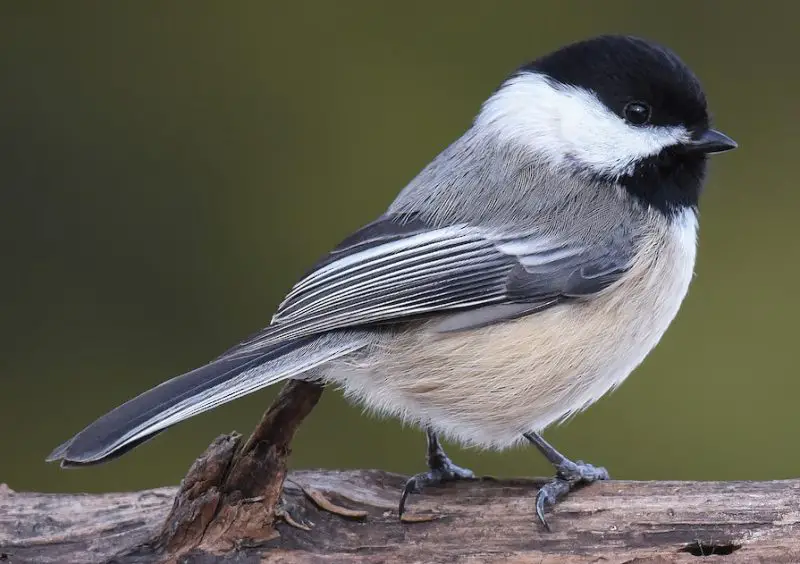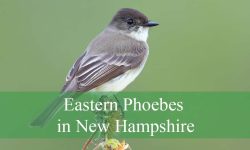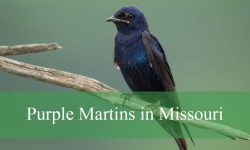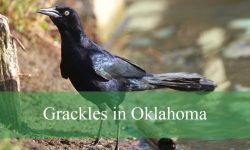Black capped chickadees are small but remarkably charismatic birds that thrive across Wyoming’s forests, foothills, and open woodlands. Their soft calls echo through snowy valleys, and their curious behavior makes them one of the most approachable birds in the region. Despite their size, they reveal complex social structures, advanced memory skills, and survival strategies that surprise even experienced birdwatchers.
Wyoming’s rugged climate, with its cold winters and dramatic seasonal shifts, creates unique challenges that chickadees are exceptionally adapted to overcome. Their ability to remain year round residents, enduring storms and subzero temperatures, makes them one of the state’s hardiest songbirds. Their behavior, diet, and movement patterns all reflect deep adaptation to Wyoming’s landscapes.
This article uncovers hidden secrets about black capped chickadees in Wyoming, revealing their feeding habits, survival techniques, social dynamics, ecological roles, and seasonal rhythms—details that many people never notice despite seeing these birds regularly.
Understanding Black-Capped Chickadees in Wyoming

What Black-Capped Chickadees Really Are
Black capped chickadees are small passerines known for their distinctive black cap, white cheeks, and soft gray wings. Their rounded bodies and short necks help conserve heat, a crucial adaptation in Wyoming’s harsh winters. Their signature “chick-a-dee-dee” call is one of the most recognizable bird sounds in North America and plays an essential role in communication and predator warnings.
Their intelligence is notable. Chickadees possess advanced spatial memory that allows them to remember thousands of food cache locations scattered across forests and brushlands. This mental ability is especially valuable in Wyoming, where winter food availability can fluctuate dramatically. Their behavior blends caution, curiosity, and impressive adaptability in ways that set them apart from many other small birds.
Why Wyoming Provides Excellent Habitat
Wyoming’s landscape offers a rich mix of coniferous forests, riparian corridors, sagebrush edges, and open woodland, creating ideal foraging and nesting environments for chickadees. Pine and spruce forests provide protective cover, insect resources, and suitable nesting cavities. Willows and cottonwoods along streams offer year round insect activity and sheltered perches.
Winter conditions, though severe, favor chickadees because their competitors often migrate away. This leaves them with access to insect larvae, seeds, and suet sources from human settlements without heavy competition. Wyoming’s combination of cold climate and varied habitats allows chickadees to showcase their most remarkable adaptations.
Where They Are Found Across the State
Chickadees occur throughout Wyoming, from the Wind River Range to the Black Hills and from high elevation forests to low valleys. They occupy state parks, campgrounds, ranchlands, and suburban neighborhoods where feeders and shrubs provide reliable food. Their ability to settle in both wild and human influenced environments makes them one of Wyoming’s most widespread year round residents.
Hidden Behaviors That Most People Don’t Notice
Their Curiosity Is a Survival Strategy
Black capped chickadees appear fearless around humans, often inspecting feeders from only a few inches away. This curiosity is not merely personality. It is a survival tactic that encourages exploration of new resources, nest sites, and potential food sources. In Wyoming’s challenging winters, birds that investigate new opportunities often gain energy advantages that translate into higher survival rates.
They Communicate With One of the Most Complex Systems in Songbirds
Their “chick-a-dee” call contains a huge amount of information. The number of “dee” notes indicates threat levels. More notes signal higher danger, especially from fast moving predators like hawks. Subtle changes in rhythm and pitch convey details about food sources, flock members, and territory boundaries. Chickadees in Wyoming often rely on this system heavily in open landscapes where visual signals can be disrupted by snow, wind, or terrain.
They Change Brain Structure Seasonally
One of the most astonishing chickadee adaptations is their ability to grow and prune neurons throughout the year. During fall, when they begin storing thousands of food caches, their hippocampus enlarges to support advanced spatial memory. In spring, it decreases slightly as caching behaviors become less critical. This seasonal brain change is one of the most remarkable neurological adaptations found in any North American bird.
Anatomy Built for Wyoming’s Climate
Insulated Plumage for Extreme Cold
Chickadees have dense layers of feathers that trap air and insulate them during freezing nights. They fluff their plumage to maximize heat retention, forming a spherical shape that reduces heat loss. This adaptation allows them to survive temperatures that drop far below zero in parts of Wyoming.
Lightweight, Efficient Wings
Their short, rounded wings support quick flights between branches, ideal for navigating forests and brushy terrain. This agility helps them avoid predators and move rapidly between cached food locations.
A Versatile Bill
Their small bill is perfectly shaped for both insect gleaning and seed cracking. They use it to peel bark, extract larvae, break seeds, and manipulate small food items. This versatility becomes crucial in winter when food sources shift.
Feeding Habits Across Wyoming
Seasonally Flexible Diet
In summer, chickadees rely heavily on insects, spiders, and larvae found among pine branches, shrubs, and willow thickets. They inspect bark crevices, leaf clusters, and small cavities with meticulous precision. As winter arrives, their diet broadens to include seeds, berries, and stored food reserves.
Food Caching for Winter Survival
Chickadees hide food items one at a time across hundreds of locations each day during fall. These caches include seeds, insect larvae, spiders, and small berries. Each cache is hidden separately, reducing the risk of losing all resources to predators. Their memory allows them to retrieve these items months later, even under snow or ice.
Foraging in Human Areas
Wyoming’s rural homesteads, ranch houses, and mountain cabins often provide suet feeders, seed trays, and sheltered shrubs that attract chickadees. These birds quickly learn which feeding spots are reliable. Their presence near homes benefits the species by improving winter survival.
Nesting and Breeding Behavior
Choosing Nest Sites
Chickadees nest in cavities such as old woodpecker holes, tree snags, or crevices in old fence posts. They prefer soft wood or decayed tree interiors where excavation requires minimal effort. In Wyoming’s forests, nests often appear in aspens, cottonwoods, or dead conifers.
Nest Construction
Females construct nests using moss, bark fiber, animal hair, and plant fluff. The interior is soft and insulated, allowing eggs and chicks to remain warm during Wyoming’s cool spring nights. Males defend the nesting territory and supply food for the female while she incubates the eggs.
Raising Chicks
Chickadees lay between five and eight eggs per brood. Both parents feed the chicks a high protein diet of caterpillars, small beetles, and spiders. Once chicks fledge, they stay with their parents for several weeks, learning foraging skills essential for survival.
Black-Capped Chickadees Across Wyoming Landscapes
Mountain Forests
Coniferous forests in the Tetons, Bighorns, and Snowy Range provide ideal habitat. Chickadees forage among pine boughs, nest in old tree cavities, and stay year round where food is available.
Sagebrush Valleys and Rimrock Edges
Although typically birds of forests, chickadees also explore sagebrush flats and valley edges, especially near riparian corridors. They forage where insects gather around shrubs and grasses.
Riparian Woodlands
Cottonwood galleries and willow stands along Wyoming’s creeks and rivers support abundant insect life. These zones become critical feeding areas throughout spring and early summer.
Suburban and Rural Homesteads
Feeders, shrubs, and sheltered nesting structures make chickadees common around Wyoming homes. Their presence brings activity and sound to winter yards when many other birds have migrated.
Seasonal Rhythms in Wyoming
Winter Survival and Nighttime Torpor
Chickadees survive Wyoming winters using a controlled form of torpor that lowers body temperature at night to conserve energy. This delicate balance allows them to use fewer calories while still recovering warmth at dawn. They rely heavily on cached food during this period.
Spring Breeding and Territory Formation
In March and April, chickadees begin forming pairs and selecting nest sites. Their calls become more frequent as they defend territories and prepare for breeding.
Summer Abundance
Summer is the season of peak insect availability. Chickadees raise their broods, forage widely, and maintain social groupings. Forests filled with beetles and moth larvae offer ideal feeding conditions.
Autumn Food Storage
As temperatures drop, chickadees focus on caching seeds and insects in dispersed hiding spots. This behavior represents their primary preparation for winter and reflects their advanced memory capabilities.
Interaction With Other Wildlife
Birds
Chickadees interact with woodpeckers, nuthatches, kinglets, and juncos. Mixed species flocks form in winter, allowing multiple birds to increase predator awareness and locate food more efficiently.
Mammals
Squirrels and chipmunks sometimes compete for stored seeds or tree cavities. Chickadees tend to nest in spots that are too small or too concealed for mammals to access.
Insects
Chickadees play an essential role in regulating insect populations. During breeding season, their demand for high protein prey has a noticeable impact on local insect communities.
Myths and Misconceptions
Myth: Chickadees Are Dependent on Bird Feeders
Although feeders help during winter, chickadees rely heavily on natural food sources such as insects, larvae, and seeds.
Myth: They Migrate Out of Wyoming
Chickadees remain year round residents, surviving winters through torpor and food caching.
Myth: Chickadees Are Always Social
Outside winter, chickadees become territorial and defend nest sites vigorously.
Ecological Importance
Natural Insect Control
Chickadees consume thousands of insects during the breeding season, helping keep forest ecosystems balanced.
Indicators of Forest Health
Their presence reflects strong insect populations and appropriate tree cavity availability.
Winter Stability in Bird Communities
As year round residents, chickadees provide consistency in ecological systems during periods when migratory birds are absent.
FAQs About Black-Capped Chickadees in Wyoming
Are black capped chickadees common in Wyoming?
Yes. They are widespread year round residents across forests, valleys, and suburban areas.
What do chickadees eat in winter?
They rely on cached seeds, berries, insect larvae, and food from feeders.
Do they migrate?
No. They remain in Wyoming throughout winter.
How do chickadees survive freezing temperatures?
They use dense plumage, cached food, and nighttime torpor to conserve energy.
Where do they build nests?
They nest in tree cavities, old woodpecker holes, or crevices in decaying wood.
Do chickadees stay in pairs?
Pairs form during spring breeding, then integrate into winter flocks after the season ends.
Conclusion
Black capped chickadees in Wyoming reveal a blend of resilience, intelligence, and adaptability unmatched by many other small songbirds. Their advanced memory, social communication, cache storing, and cold weather survival strategies highlight a species deeply shaped by Wyoming’s demanding climate and varied landscapes. Understanding their hidden behaviors adds depth to the familiar sight of these tiny, energetic birds that remain active year round.






